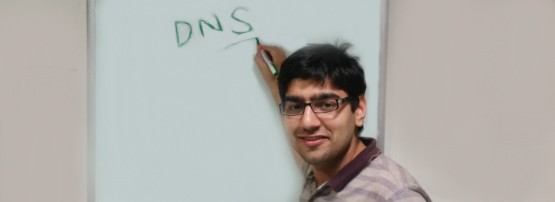
Last month I attended SANOG 27 in Nepal. SANOG conferences are very interesting as they give us an opportunity to meet network operators from within the South Asia region.
Below is a summary of some of the presentations I attended over the two days:
IANA stewardship transition
The sessions after the welcome keynote were quite interesting. Paul Wilson, Director General of APNIC, presented on the IANA stewardship transition giving us a great overview of the process.
RTT matters
Afterwards, Yoshinobu Matsuzaki, from IIJ, discussed an interesting case of how Round Trip Time (RTT) matters, giving us a good understanding of how wifi adapters go to sleep resulting in AP buffering the packets and some strange behaviors in latency.
Virtualization and routing
Philip Smith, from NSRC, gave two presentations: “Virtualization for testing & training” and “IPv4 Internet routing table analysis”.
During the first presentation, Philip talked about the impact recent advancements in cheaper computers, laptops and handheld devices had in training workshops, particularly how these devices had faster processors, more RAM and more storage, making running programs and visualizations quicker. His slides included pictures comparing old vs recent days.
I really enjoyed Philip’s second presentation, which included interesting analysis of how the growth of the routing table was linked to certain events and cases where certain ISPs de-aggregated their announcements. He also gave some examples of weird prepending cases. De-aggregation factors in the presentation gave a mathematical number for reference about the possible noise in the routing table, the scope of aggregation, and improvement on the size of the table. The only thing it really missed were details on IPv6 – the report was entirely focused on IPv4. I would love to see an IPv6 version of such report in the future.
Backbone infrastructure in Nepal
Samit Jana, from Worldlink Communications, gave a detailed talk on the backbone infrastructure in Nepal. He included maps of key connectivity points and it was good to get a brief idea of physical connectivity routes as well as capacity.
TLS all the time
Day two had some nice presentations, starting with Ashley Jones, from PCH. He gave a presentation on Transport Layer Security. His presentation provided a detailed step-by-step setup of letsencrypt , which allows one to have a free SSL certificate. The process is relatively easier than traditional csr generation and getting it signed. If you have a website or a blog and you’re not running SSL, then this presentation can be an excellent start.
Fighting against DDoS
Following Ashley, there was a presentation from Fakrul, from APNIC, on community tools to fight against DDoS attacks.
Fakrul gave a good introduction of Team Cymru’s tools including Remote Triggered Black Holing (RTBH). I always find RTBH quite interesting because it gives control to black hole traffic coming to an IP address while under attack. This function saves everyone else on the network from attack.
Fakrul’s slides give a good introduction to many of these fundamental concepts.
Disconnected Network Islands
After Fakrul’s presentation, it was time for my presentation on disconnected network islands, where I discussed cases of visible noise in the global routing table because of the repetition of an ASN multiple times in the AS_PATH (excluding cases of prepending). I included a small study of such routes and the possible reasons for those visible behaviours based on the data taken from Oregon Routeviews and RIPE RIS from 2010 to 2015.
Closing Ceremony
During the closing ceremony there were two remarkable presentations: “Regulatory Impact on Technology Adoption” by Ananda Raj, from NTA; and “Growing your network with Jugaad” by Dileep Agarwal, from Worldlink Communications.
Ananda’s thoughts were very refreshing because we generally do not hear from founding members of large ISPs about quick fixes they did in the past; instead they always use cheeky marketing terms about caring for customers. Ananda sounded like a very different person in that respect and he gave examples of how a regulator can help in creating a basic discipline rather than being a road block.
Dileep also gave a remarkable presentation on Jugaad, which means a ‘quick fix’ in Hindi/Nepalese/Urdu. His presentation was around creative fixes which network operators have used to build a large network in Nepal, two of which were weatherproofing switches they used for their city-wide wired ethernet network and their in-house built traffic compressor/decompressor to save bandwidth on expensive satellite links.
Overall it was an excellent event, packed with content, interesting people from around the world to meet, with a good touch of Nepalese culture at social events. The next stop is APRICOT 2016 later in this month, where I will be presenting on Misuse of top ASNs. I look forward to chatting with all of you who are attending!
Anurag works at global IP transit and datacenter provider Hurricane Electric and is based in India. His expertise is around DNS, BGP routing, anycast & IPv6.
The views expressed by the authors of this blog are their own and do not necessarily reflect the views of APNIC. Please note a Code of Conduct applies to this blog.
